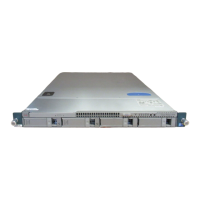added to the group. If you change the configuration of one of these parameters, the device propagates
that setting to all ports in the group, such as the allowed VLANs and the trunk status. For example, if
one port in a port group ceases to be a trunk, all ports cease to be trunks.
•
If you try to enable 802.1X on a trunk port, an error message appears, and 802.1X is not enabled.
•
If you try to change the mode of an 802.1X-enabled port to trunk, the port mode is not changed.
Default Settings
Table 2: Default Settings for Access and Trunk Interfaces
DefaultParameters
AccessSwitchport mode
1 to 3967, 4048 to 4094Allowed VLANs
VLAN1Access VLAN ID
VLAN1Native VLAN ID
DisabledNative VLAN ID tagging
ShutAdministrative state
Configuring Access and Trunk Interfaces
Configuring a LAN Interface as a Layer 2 Access Port
You can configure a Layer 2 port as an access port.
Before You Begin
•
Know that the interface can be either Ethernet or vEthernet.
•
Know that an access port transmits packets on only one, untagged VLAN. You specify which VLAN
traffic that the interface carries, which becomes the access VLAN. If you do not specify a VLAN for an
access port, that interface carries traffic only on the default VLAN. The default VLAN is VLAN1.
•
Know that the VLAN must exist before you can specify that VLAN as an access VLAN. The system
shuts down an access port that is assigned to an access VLAN that does not exist.
•
Know that the Cisco Nexus 1000V commands may differ from the Cisco IOS commands.
Cisco Nexus 1000V for VMware vSphere Interface Configuration Guide, Release 5.x
26
Configuring Layer 2 Interfaces
Default Settings

